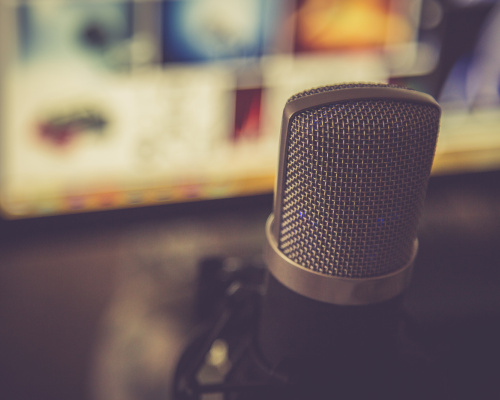The Key to Great Video Isn’t What You Think
Date
As video further cements itself as a powerful tool in the educational landscape, more and more organizations are diving in and creating their own content. While this can produce tremendous benefits for those who do it well, it can also be something of a minefield, especially for those just venturing in. Contrary to popular belief, the most challenging element to get right is not splashy motion graphics, snappy camera work, or stunning images. In fact, it’s got nothing to do with visuals whatsoever: it’s the audio.
Sound Advice
Imagine watching a movie. The music is working hard behind the scenes to enhance the mood. When it’s successful, it’s hardly noticeable. However, nothing will put off a viewer faster than lousy audio, including unbalanced volume and tone; unwelcome echo; extra background noise; or mismatched music.
Novice video-makers quickly discover that getting quality audio is challenging. Choosing appropriate background music and setting the correct volume levels is no trivial matter either. When creating voiceovers or conducting live interviews, there is a whole host of technical issues to consider and get right.
In this post, we’re going to explore a few common challenges and some possible solutions that cover a range of budgets and complexity.
Make Your Voiceover Heard
Hire professional voice talent. While not the least expensive option, hiring a professional guarantees quality audio files that you can use right away. Professional voice over talent— typically a freelancer working through an online service such as voices.com—will give you a quote on price and time based on your word count. If you only do a moderate amount of voiceover work, this may be a simpler, more cost-effective solution than setting up your own recording studio. There is also a huge variety of vocal talent available, so you’re sure to find just the right voice for any project.
Buy quality equipment and do-it-yourself. The first consideration in a DIY setup is the space you’ll have for recording. The more space that sound waves have to travel and bounce around, the bigger the problem this will be. Be aware that sounds from air conditioners, refrigerators and other sources can also be audibly recorded and are sometimes very difficult to edit out. Since echo and background noise are the primary barriers to quality audio, smaller spaces with sound absorbing materials are best. You can buy or make sound dampening panels. An especially affordable solution is to hang blankets around the space to muffle reverberation.
Magic Mic
A high-quality microphone is a necessary investment to recording. It is important to know what type of mic to use for a given situation.
Dynamic microphones are good at isolating speakers from background noise and are very common for radio broadcasters and podcasters alike. For best results, you’ll want to be close to the mic and use a mic stand or boom arm with shock mount cradle to help reduce extraneous noise.
Condenser microphones are more sensitive and can be used from a greater distance, and as a result tend to pick up more background noise. When using a condenser mic, your recording space is more important. You will want to make sure you are recording in a sound-proofed and acoustically-treated space.
If you have the space and prefer to keep a fair distance from the mic, such as when more movement is necessary during the recording, then a condenser mic is a good choice. Condenser mics are often used for voice actors, as the mic can be placed far enough away as to not interfere with the acting while still delivering a quality recording. On the other hand, if you are recording in non-optimal or noisy environments—or when recording multiple people—a good-quality dynamic mic is a better choice.
Both condenser and dynamic mics can be found as USB mics, which plug directly into the computer. Or as analog XLR mics, which require a separate analog-to-digital converter. USB mics are well-suited for solo recordings. When recording a group of people as a panel or a one-on-one interview, a separate analog-to-digital converter will deliver better results.
Face the Music
There are some excellent stock services with vast music libraries and—while prices can vary—there is peace of mind knowing that the tracks you purchase will be royalty-free.
Here are a few ideas for places to obtain no cost royalty-free music:
- YouTube
- Epidemic Sound
- Free Stock Music
- Amazon (free with Prime membership)
The following is a short list of commercial stock music agencies:
The Proof Is in the Post-Production
It’s rare that you’ll just be able to record a voiceover that doesn’t need some degree of post-production editing. It may be as simple as optimizing volume (gain), but it often involves removing unwanted background noise and echo.
For audio editing software, many people choose Audacity as a free online alternative. Adobe Audition is included in the Creative Cloud subscription and is a powerful solution that has clean built-in integration with Premiere and After-Effects apps. Other popular apps include Avid Pro-Tools, Cubase, and Reaper, to name just a few. Prices and capabilities vary greatly so you’ll want to examine your own needs and budget carefully before committing to one.
Let us know how you’re tackling your audio challenges at blog@clarity-innovations.com!

